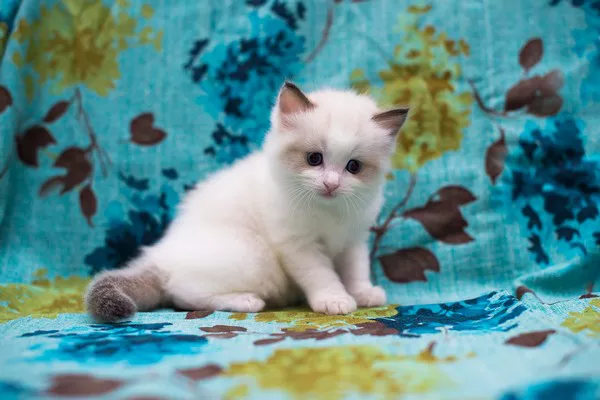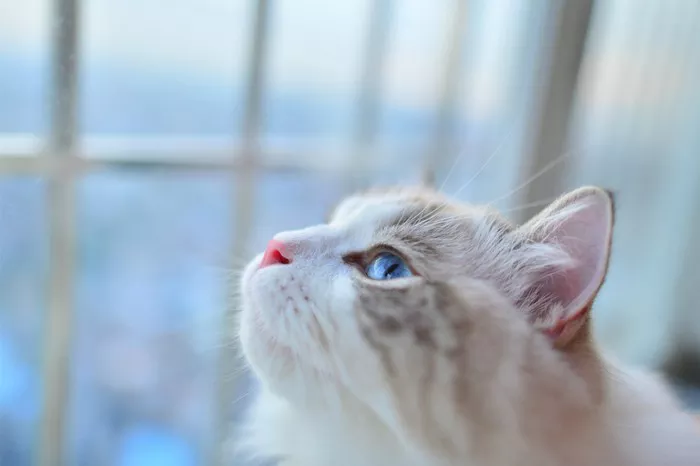Ragdoll cats, with their striking blue eyes, silky fur, and gentle demeanor, have earned a reputation as affectionate and sociable feline companions. However, a common misconception often surrounds these beautiful cats – the belief that Ragdolls are inherently clingy. In this in-depth exploration, we unravel the myth and delve into the true nature of Ragdoll cats, examining the factors that contribute to their perceived clinginess and the nuances of their unique temperament.
Unveiling the Ragdoll Persona
1. A Breed Apart:
Ragdolls are a distinctive breed known for their large size, semi-longhair coat, and color-point markings. Originating in the 1960s, this breed was developed with an emphasis on creating a cat with a gentle and amiable temperament. The result is a feline companion that is often described as “puppy-like” due to its affectionate and sociable nature.
2. Physical Characteristics:
Ragdolls possess physical features that contribute to their charm. Their semi-longhair coat, which comes in various patterns and colors, is soft to the touch. The breed standard includes large, expressive blue eyes that captivate the hearts of those fortunate enough to gaze into them.
3. Docile Demeanor:
One of the defining traits of Ragdoll cats is their docile and laid-back demeanor. Unlike some more independent cat breeds, Ragdolls are known for their relaxed nature, often going limp when picked up – a behavior that inspired their name. This calm disposition fosters an environment conducive to bonding and affection.
Dispelling the Clinginess Myth
1. Understanding Affectionate Behavior:
Ragdolls are undeniably affectionate cats, but the term “clingy” may not accurately capture the essence of their behavior. Affection in Ragdoll cats is expressed through a desire for closeness, companionship, and interaction. They may follow their owners from room to room and seek out human companionship, but this behavior is rooted in their social nature rather than clinginess.
2. Social Creatures:
Ragdolls are inherently social creatures that thrive on companionship. This social nature is a result of their breeding history, which aimed to create a cat that forms strong bonds with its human family. Ragdolls often enjoy being part of family activities and may seek out the company of both adults and children.
3. Adaptability to Routines:
Ragdolls can adapt to the routines of their human companions, and their desire for interaction may intensify during periods when their owners are at home. This adaptability is a testament to their responsive and communicative nature rather than an indication of clinginess.
Factors Influencing Affectionate Behavior
1. Socialization and Early Experiences:
The early socialization experiences of a Ragdoll cat play a crucial role in shaping their behavior. Cats that have positive interactions and experiences during their formative weeks and months are more likely to develop a secure and affectionate nature.
2. Individual Personality:
Each Ragdoll cat has a unique personality, and the degree of affection they exhibit can vary. Some Ragdolls may be more outgoing and seek constant interaction, while others may be more laid-back and content with occasional companionship. Understanding the individual personality of your Ragdoll is key to fostering a harmonious relationship.
3. Companion Animals:
The presence of other pets in the household can influence a Ragdoll cat’s behavior. Some cats may seek more human interaction when there are no other feline or canine companions, while others may enjoy the company of fellow animals. The dynamics of the household play a role in shaping their social preferences.
Signs of Ragdoll Affection
1. Following their Owners:
Ragdoll cats often exhibit a behavior known as “shadowing,” where they follow their owners from room to room. This behavior is a manifestation of their desire to be near their human companions and participate in their daily activities.
2. Lap Sitting and Cuddling:
Ragdolls are known for their love of sitting on laps and cuddling. This behavior is a clear expression of their affectionate nature. When a Ragdoll chooses to settle on a lap or curl up beside their owner, it is a demonstration of trust and a desire for physical closeness.
3. Vocalizations and Purring:
Affectionate Ragdolls may use vocalizations, such as gentle meows or purring, to communicate with their owners. Purring is not only a sign of contentment but also a means of expressing their connection and satisfaction with the current social interaction.
4. Kneading Behavior:
Kneading, where a cat rhythmically presses their paws against a soft surface, is a behavior often associated with contentment and affection. Ragdolls may knead when sitting on their owners’ laps or when settling down for a nap, further emphasizing their bond.
Meeting the Needs of Affectionate Ragdolls
1. Quality Time and Interaction:
Ragdolls thrive on quality time and interaction with their human companions. Dedicate time each day for play sessions, interactive activities, and simply enjoying each other’s company. This intentional bonding time is essential for reinforcing the strong human-feline bond.
2. Enrichment and Play:
Provide enrichment and play opportunities to keep your Ragdoll mentally stimulated. Interactive toys, puzzle feeders, and engaging activities can help satisfy their need for mental challenges and prevent boredom.
3. Comfortable Resting Spots:
Create comfortable resting spots throughout your home where your Ragdoll cat can relax. Soft beds, cozy blankets, or even heated pads can be appealing to your cat’s sense of comfort and security.
4. Respect Individual Boundaries:
While Ragdolls are generally affectionate, it’s crucial to respect their individual boundaries. If your cat signals that they need some alone time or space, honor their cues and provide them with the freedom to choose when to engage in social interactions.
Addressing Changes in Behavior
1. Observing for Stressors:
Pay close attention to changes in your Ragdoll cat’s behavior. If they become less affectionate or show signs of stress, consider potential stressors in their environment. Changes in the household, new pets, or disruptions to routines can impact their behavior.
2. Veterinary Consultation:
If you observe significant changes in your Ragdoll cat’s behavior or overall well-being, consult with a veterinarian. Health issues, discomfort, or underlying concerns may contribute to alterations in behavior. A thorough veterinary examination can help identify and address any potential issues.
The Joy of Ragdoll Companionship
In conclusion, the perceived clinginess of Ragdoll cats is better understood as a manifestation of their affectionate and social nature. Ragdolls form strong bonds with their human companions and express their love through behaviors such as following, cuddling, and vocalizing. While their affectionate nature is a defining characteristic, it’s important to recognize and respect their individual preferences for social interactions.
As Ragdoll owners, embracing the joy of companionship with these gentle giants involves nurturing their social needs, providing enrichment, and understanding the cues that indicate contentment or a desire for space. By fostering a positive and communicative relationship with your Ragdoll cat, you can enjoy the rewards of their affection and companionship while respecting their individual personalities and boundaries. The bond between a Ragdoll and their owner is a special connection that, when nurtured with love and understanding, creates a harmonious and fulfilling feline-human relationship.

























